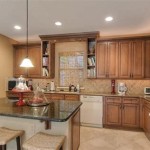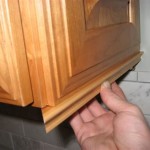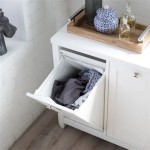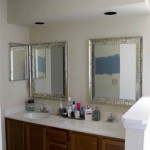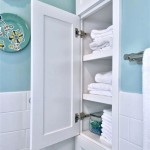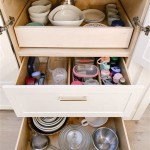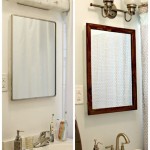Can You Paint Wooden Cabinets Without Sanding Them? A Comprehensive Guide
The prospect of revitalizing kitchen or bathroom wooden cabinets often brings with it the daunting task of sanding. Sanding is traditionally viewed as a necessary step to ensure proper paint adhesion and a smooth, professional finish. However, advancements in paint technology and surface preparation methods have opened up the possibility of painting wooden cabinets without the laborious process of sanding.
This article delves into the feasibility of painting wooden cabinets without sanding, exploring the techniques, materials, and crucial considerations involved. It will outline suitable alternatives to sanding, emphasizing surface preparation, primer selection, and the appropriate types of paint to achieve a durable and aesthetically pleasing result. The goal is to provide a comprehensive understanding of how to achieve a successful cabinet painting project without relying solely on traditional sanding methods.
Key Point 1: Understanding the Purpose of Sanding
Sanding serves primarily three functions prior to painting. First, it removes existing finishes such as varnish, lacquer, or old paint that may be peeling, chipping, or otherwise compromised. These failing finishes can prevent a new coat of paint from adhering properly, leading to premature peeling or blistering. Second, sanding creates a slightly rough surface, providing “tooth” for the new paint to grip onto. This mechanical bond is essential for durable adhesion. Third, sanding helps to smooth out imperfections, such as scratches, dents, or unevenness in the wood, resulting in a more flawless final finish. Without sanding, these imperfections may be more visible under the fresh coat of paint.
Traditional sanding typically involves using progressively finer grits of sandpaper. Starting with a coarser grit (e.g., 80-120) to remove the bulk of the old finish, followed by medium grits (e.g., 150-180) to smooth out the surface, and finally finer grits (e.g., 220-320) to create an ultra-smooth base for painting. The specific grits required will depend on the condition of the cabinets and the desired level of smoothness.
However, sanding is undeniably time-consuming and creates a significant amount of dust. This dust can be hazardous to inhale and requires thorough cleanup. Furthermore, sanding can damage delicate cabinet details if not performed carefully. These drawbacks are the primary motivators for seeking alternative methods of preparing cabinets for paint.
Key Point 2: Alternative Methods to Achieve Adhesion Without Sanding
While sanding provides a reliable method for paint adhesion, alternative methods exist that can effectively prepare wooden cabinets for painting without requiring abrasive removal of the existing finish. These methods rely on chemical cleaners and bonding primers to achieve a secure and durable bond between the existing surface and the new coat of paint.
The cornerstone of a no-sand cabinet painting approach is thorough cleaning. Cabinets accumulate grease, grime, and food splatters over time, which can interfere with paint adhesion. A strong degreasing cleaner specifically formulated for kitchen surfaces is essential. Products containing trisodium phosphate (TSP) or TSP substitutes are effective but should be used with caution, following the manufacturer's instructions and wearing appropriate protective gear. Alternatively, environmentally friendly cleaners designed to cut through grease are also available.
After cleaning, a liquid deglosser can be applied. This chemical solution softens the existing finish, dulling the sheen and creating a slightly tacky surface that promotes paint adhesion. Liquid deglossers are typically applied with a cloth and allowed to sit for a specified time before being wiped clean. Careful adherence to the product instructions is crucial for optimal performance.
Bonding primers are the next crucial step. These primers are specifically designed to adhere to glossy or non-porous surfaces without the need for sanding. They contain special resins that create a strong chemical bond with both the existing finish and the new paint. Several types of bonding primers are available, including acrylic-urethane based primers and epoxy-based primers. The choice of primer will depend on the existing finish, the type of paint being used, and the desired level of durability.
Application of the bonding primer is paramount. Follow the manufacturer's instructions carefully regarding application techniques, drying times, and the number of coats required. In some cases, a light scuffing with a fine-grit sanding sponge (e.g., 320-grit) after the primer has dried can further enhance adhesion, but this is significantly less intensive than traditional sanding.
Key Point 3: Selecting the Right Paint for No-Sand Cabinet Painting
The type of paint used is just as important as the surface preparation when painting wooden cabinets without sanding. Certain paints are formulated to provide better adhesion and durability on smooth, non-porous surfaces than others. Choosing the appropriate paint is critical for a long-lasting and aesthetically pleasing finish.
Acrylic latex paints are a popular choice for cabinet painting due to their durability, ease of application, and low VOC (volatile organic compound) content. High-quality acrylic latex paints offer excellent adhesion, especially when used in conjunction with a bonding primer. Look for paints specifically formulated for cabinets and trim, as these tend to be more durable and resistant to chipping and scratching.
Alkyd paints, also known as oil-based paints, offer exceptional durability and a smooth, hard finish. They are known for their excellent leveling properties, resulting in a brushstroke-free appearance. However, alkyd paints have a higher VOC content than acrylic latex paints and require mineral spirits for cleanup. They also tend to yellow over time, especially in areas with limited sunlight exposure.
Waterborne alkyd paints combine the benefits of both acrylic latex and alkyd paints. They offer the durability and leveling properties of alkyd paints with the low VOC content and easy cleanup of acrylic latex paints. These paints are a relatively newer technology and are becoming increasingly popular for cabinet painting.
Regardless of the type of paint chosen, multiple thin coats are preferable to one thick coat. Thin coats dry more evenly and reduce the risk of drips and runs. Allow each coat to dry completely according to the manufacturer's instructions before applying the next coat. A light sanding with a fine-grit sanding sponge between coats can further smooth out the finish and improve adhesion.
Consider using a paint sprayer for a professional-looking finish. Paint sprayers provide a smooth, even coat of paint without brushstrokes or roller marks. However, they require practice and proper setup to avoid runs and overspray. If using a paint sprayer, be sure to mask off surrounding areas to protect them from paint.
The success of painting wooden cabinets without sanding hinges on meticulous preparation, the use of a high-quality bonding primer, and the selection of a durable, cabinet-grade paint. While sanding remains a viable option, these alternative methods offer a significant time-saving advantage while still delivering satisfactory results. It is crucial to remember that the longevity and appearance of the painted cabinets depend heavily on the quality of materials used and the diligence with which the preparation and application are performed. Each step, from the initial cleaning to the final coat of paint, requires careful attention to detail to ensure a professional and lasting finish.

How To Paint Laminate Cabinets Without Sanding The Palette Muse

How To Paint Kitchen Cabinets Without Sanding Or Priming

How To Paint Kitchen Cabinets Without Sanding Sustain My Craft Habit

Prep And Paint Cabinets Without Sanding

How To Paint Cabinets Without Removing Doors House Mix

How To Paint Your Cabinets In A Weekend Without Sanding Them Chris Loves Julia

Painting Over Oak Cabinets Without Sanding Or Priming Hometalk

How To Paint Fake Wood Kitchen Cabinets Simple Made Pretty 2024

Can You Paint Cabinets Without Sanding Trusted Coatings

How To Paint Oak Cabinets Without Sanding 100 Room Challenge Week 2 A Heart Filled Home Diy Decor
Related Posts

